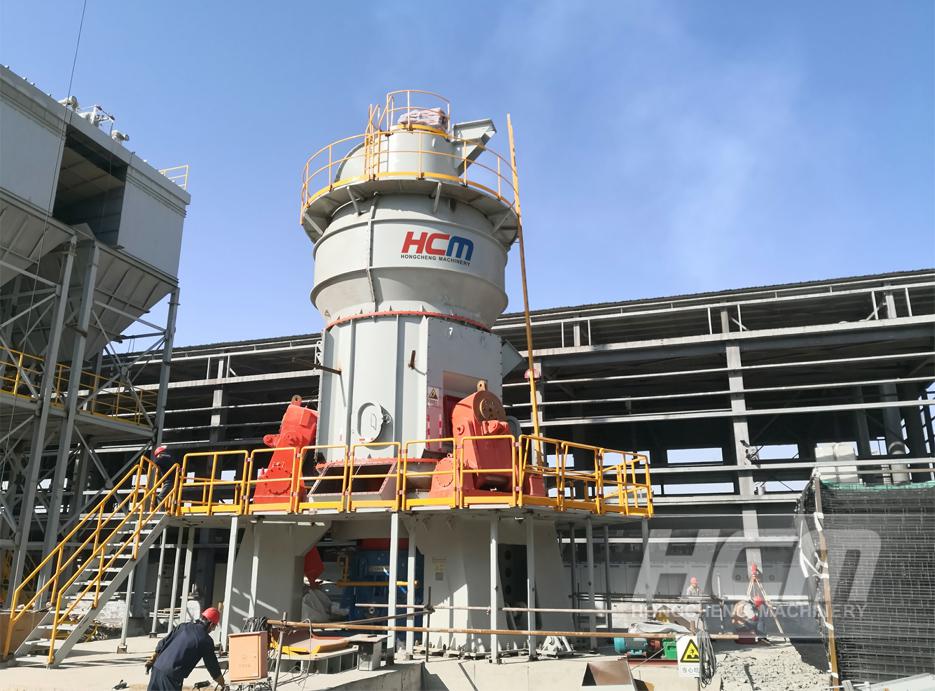China’s bulk industrial solid wastes are mainly tailings, fly ash, coal gangue, smelting slag, coal-fired slag and desulfurization gypsum. The preparation of building materials from solid wastes has attracted more and more attention. The researchers have improved the comprehensive utilization rate of solid wastes in the building materials industry through the improvement and research and development of equipment and technology. At the same time, various countries have issued supporting laws and regulations to stimulate enterprises’ enthusiasm for using solid wastes, thus improving the impact of industrial solid wastes on the environment to a certain extent. As the manufacturer of iron tailings grinding mill, our iron tailings vertical roller mill has been widely used in the iron tailings sand grinding building materials comprehensive utilization project. HCMilling(Guilin Hongcheng) will introduce the technology of preparing building materials from iron tailings.
1. Calcined cement clinker
Iron tailing is rich in iron element, which can replace iron powder as raw material for cement clinker production. Burning cement clinker with limestone, quartz sand and iron tailings as raw materials can effectively reduce the calcination temperature and cost of cement, but the mixing amount is limited, and excessive mixing amount will significantly reduce the cement strength. At present, the amount of iron tailings used for calcining cement clinker is only about 15%. It is urgent to develop new equipment and new technology to improve the amount of iron tailings and ensure the quality of cement products.
2. Concrete aggregate
The high hardness of iron tailings mainly comes from the internal quartz phase, whose particle size is close to some natural river sand and manufactured sand, and can be mixed into concrete as aggregate. The concrete with 28d strength of about 40MPa can be prepared by using iron tailings with particle size less than 1mm to replace natural river sand as fine aggregate. Based on the optimization of aggregate grading, the composite use of iron tailings and machine-made sand as aggregate can not only meet the requirements of concrete for materials, but also has better stability than that of iron tailings and natural river sand, which is more conducive to the control of concrete quality. As far as the current beneficiation process is concerned, in order to improve the metal recovery rate, the iron tailings particles are getting finer and finer, which is difficult to meet the standard of coarse aggregate and apply to ordinary concrete.
3. Concrete mineral admixture
Mineral admixtures are mainly composed of amorphous siliceous, calcareous and aluminum materials, which play an important role in improving the compactness, impermeability and durability of concrete. They can reduce the cement consumption and reduce the heat of hydration at the same time. Therefore, it is important to find new mineral admixtures for the sustainable development of the cement industry. The main mineral phase in iron tailings is usually quartz, which has little pozzolanic activity in natural state. How to improve the “pozzolanic activity” of iron tailings has become the main topic of current researchers. As one of the most commonly used methods for activation of iron tailings, mechanical grinding can reduce the activation energy of iron tailings and produce more lattice defects and plastic deformation. The research shows that mechanical grinding can stimulate the pozzolanic activity of typical mineral phases in iron tailings. As the particle size of mechanically ground minerals decreases, quartz can react with Ca (OH) 2 in cement slurry to generate amorphous hydrated calcium silicate gel and ettringite crystal and other hydration products. The research shows that when the mechanical grinding is more than 40min, the sharp angle of iron tailings is obviously reduced, more small particles are displayed, and the uniformity is gradually improved. In the anhydrite iron tailing calcium oxide system, the siliceous iron tailing of mechanical grinding can be mixed with 30% to prepare 32.5 cement. Under the condition of low water binder ratio, fine iron tailings powder can significantly promote the early hydration of composite cement paste, make the pore structure of mortar more compact, and improve the early strength. The increase of specific surface area of iron tailings has no obvious effect on improving its activity index; The change of curing temperature can significantly increase the activity index at the early stage (7d), but has little effect on the activity index at the late stage (28d). For the iron tailings slag composite system, the activity index can be improved by improving the grinding mechanism, thus improving the durability of concrete. The reasonable use of water reducing agent can increase the content of iron tailings in ordinary concrete from 30% to 40%. The iron tailings grinding can improve the grinding efficiency through its own effect, thus stimulating the pozzolanic activity of iron tailings. By optimizing the ratio of iron tailings, slag, clinker and gypsum composite cementitious materials, ultra-high performance concrete with performance meeting the national standard can be prepared.
HLM iron tailings vertical roller mill for iron tailings produced by HCMilling(Guilin Hongcheng) is the equipment for grinding iron tailings, which provides good equipment support for the technology of preparing building materials from iron tailings. It can process 80-600 mesh iron tailings with an output of 5-200t/h. If you have related equipment requirements, please contact mkt@hcmilling.com or call at +86-773-3568321, HCM will tailor for you the most suitable grinding mill program based on your needs, more details please check www.hcmilling.com.
Post time: Nov-03-2022









